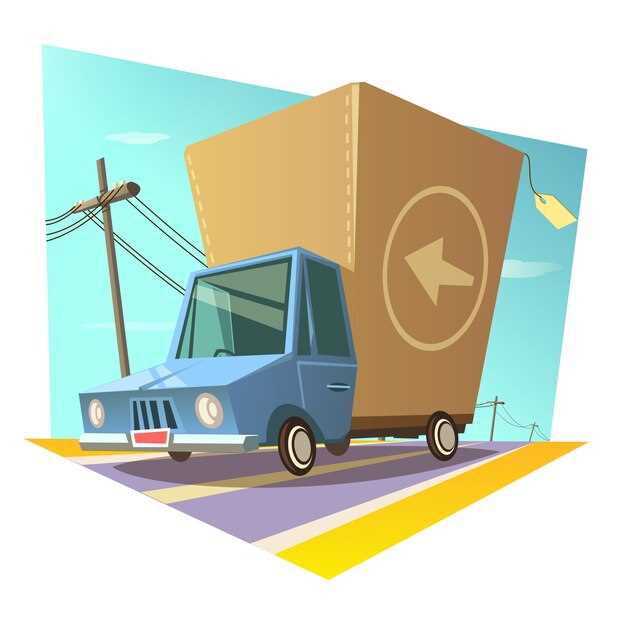
Exporting salvage cars internationally can be a complex process, filled with regulations and logistical considerations. Understanding the nuances of this market is essential for anyone looking to navigate the terrain of international shipping. Salvage vehicles, often damaged or deemed a total loss by insurance companies, can present unique opportunities for resale and restoration in foreign markets.
One of the primary challenges in shipping salvage cars internationally is compliance with both local and international regulations. Every country has its own set of rules regarding the importation of damaged vehicles, which can significantly impact your export strategy. Knowing these regulations will not only ensure a smoother shipping process but can also help you avoid costly penalties.
In this guide, we will delve into the essential steps needed for exporting salvage cars, including documenting the vehicle’s condition, understanding customs requirements, and selecting a reliable shipping partner. With the right information and preparation, you can successfully navigate the complexities of international shipping and tap into lucrative markets for salvage vehicles.
Shipping Salvage Cars Internationally: A Complete Guide

Exporting salvage cars internationally requires a comprehensive understanding of the processes involved. To begin, research the regulations of both the exporting and importing countries, as these can significantly affect transport logistics and legality.
Acquire all necessary documentation for the vehicle, including the salvage title, bill of sale, and any other paperwork mandated by customs authorities. Ensure that the car is compliant with local laws in the destination country to facilitate a smooth import process.
Select a reliable transport company that specializes in international shipping of vehicles. They will assist in navigating the complexities of logistics and customs procedures. Compare quotes and services to find a provider that suits your needs, taking into consideration their experience with salvage cars.
Consider the method of transport as well. Options typically include container shipping or roll-on/roll-off (RoRo), each having its benefits. Container shipping offers increased protection for the vehicle but at a higher cost, while RoRo is more economical but exposes the car to the elements during transit.
Prepare the vehicle for shipping by performing essential maintenance checks, such as draining fluids and disconnecting the battery, to adhere to safety regulations during transport. The car should be operational, or if it isn’t, ensure it is securely loaded for transport.
Once the vehicle arrives at the destination, be prepared to deal with customs clearance. Ensure that all customs forms are filled out accurately and that you have all required documents readily available. Be aware of any import duties and taxes that may apply.
Shipping salvage cars internationally involves careful planning and adherence to regulations. By understanding the necessary steps and working with experienced professionals, you can ensure a successful export and transport process.
Navigating Regulations for International Salvage Car Transport
Transporting salvage cars internationally requires careful navigation of various regulations to ensure compliance and avoid legal issues. Here are key aspects to consider:
- Customs Regulations:
- Before shipping, consult the customs regulations of both the exporting and importing countries. Each country may have specific restrictions and documentation requirements for salvage vehicles.
- Prepare all necessary documents, including the bill of sale, title, and customs declaration forms.
- Import Duties and Taxes:
- Be aware that importing a salvage car may incur additional duties and taxes. These can vary significantly by country.
- Consult with customs brokers or relevant authorities to understand the financial implications of your transport.
- Environmental Regulations:
- Some countries enforce stringent environmental laws regarding the transport of salvage vehicles due to potential hazardous materials.
- Ensure that the vehicle complies with environmental standards to prevent fines or confiscation.
- Transport Method:
- Choose the appropriate transport method (sea freight, air freight, or land transport) based on cost, time, and safety considerations.
- Each method may have different regulatory requirements, such as containerization or specific vessel certifications.
- Licensing and Registration:
- Check if you need special licenses or permits to transport salvage cars. This varies by country and sometimes by region.
- Familiarize yourself with the process of registering the vehicle upon arrival to ensure legal compliance.
Overall, thorough research and planning are crucial when navigating regulations for international salvage car transport. Consulting legal experts or freight forwarders may also provide valuable insights and assistance throughout the process.
Choosing the Right Shipping Method for Salvage Vehicles
When it comes to transporting salvage vehicles internationally, selecting the appropriate shipping method is crucial. The choice of transport can significantly impact both the safety of the vehicle and the overall cost of shipping. There are several shipping options available, each with its own set of advantages and considerations.
1. Container Shipping
Container shipping is one of the safest methods for transporting salvage vehicles. By placing the vehicle inside a secured container, you ensure protection from weather elements, theft, and damage during transit. This method is particularly beneficial for classic or high-value salvage cars. However, it tends to be more expensive compared to other options due to container rental fees.
2. Roll-On/Roll-Off (RoRo) Shipping
RoRo shipping involves driving the salvage vehicle onto a specialized vessel designed for transporting vehicles. This method is generally more cost-effective than container shipping and is suitable for standard salvage cars. However, it offers less protection, as vehicles are exposed to the elements during transport. If you choose RoRo, ensure your vehicle is in a condition that can withstand such conditions.
3. Flat Rack Shipping
This method involves securing the salvage vehicle on a flat rack or platform. It combines some benefits of container shipping and RoRo, allowing for flexibility in hauling oversized vehicles. While it is a more economical option than container shipping, like RoRo, it exposes the vehicle to outside conditions, making it essential to assess the vehicle’s durability.
4. Air Freight
For those needing rapid transport, air freight is the fastest option. Although it is the most expensive method, air freight can be a viable choice for urgent salvage vehicles. Consider this option primarily if time is of the essence and the budget allows for it. Ensure all necessary customs documentation is prepared to avoid delays.
Conclusion
Choosing the right shipping method for salvage vehicles ultimately depends on factors like budget, time constraints, and the vehicle’s condition. Assess each transport option carefully, considering the balance between cost and protection for your salvage. Prior planning and diligent research will help ensure a smooth shipping process, securing your investment in the salvage vehicle.
Steps to Ensure a Smooth Export Process for Salvage Cars

Exporting salvage cars requires careful planning and execution to avoid potential issues. Start by researching the regulations of both the exporting and importing countries. Different nations have varying requirements regarding the condition of vehicles, documentation, and taxes.
Next, ensure that you have the necessary documentation. This typically includes the title of the car, any relevant bills of sale, export permits, and any specific forms required by customs authorities. Proper documentation helps to clear the vehicle through customs seamlessly.
Select a reputable transport service specializing in international car shipping. Compare quotes and services to find a provider well-versed in handling salvage cars. Ensure they are licensed and insured, providing you with peace of mind during transport.
Prepare the vehicle for transport by removing all personal belongings and ensuring it is clean. This can facilitate inspections and simplify the export process. Verify that the car is in a condition compliant with the destination country’s regulations.
Coordinate with both the shipping company and customs agents to schedule pickup and delivery. Clear communication will help to address any unforeseen obstacles during the process, ensuring everything stays on track.
Finally, track the shipment throughout its journey. Many transport companies offer tracking services that allow you to monitor the vehicle’s status in real-time. This keeps you informed and ready to address any issues that may arise during export.
